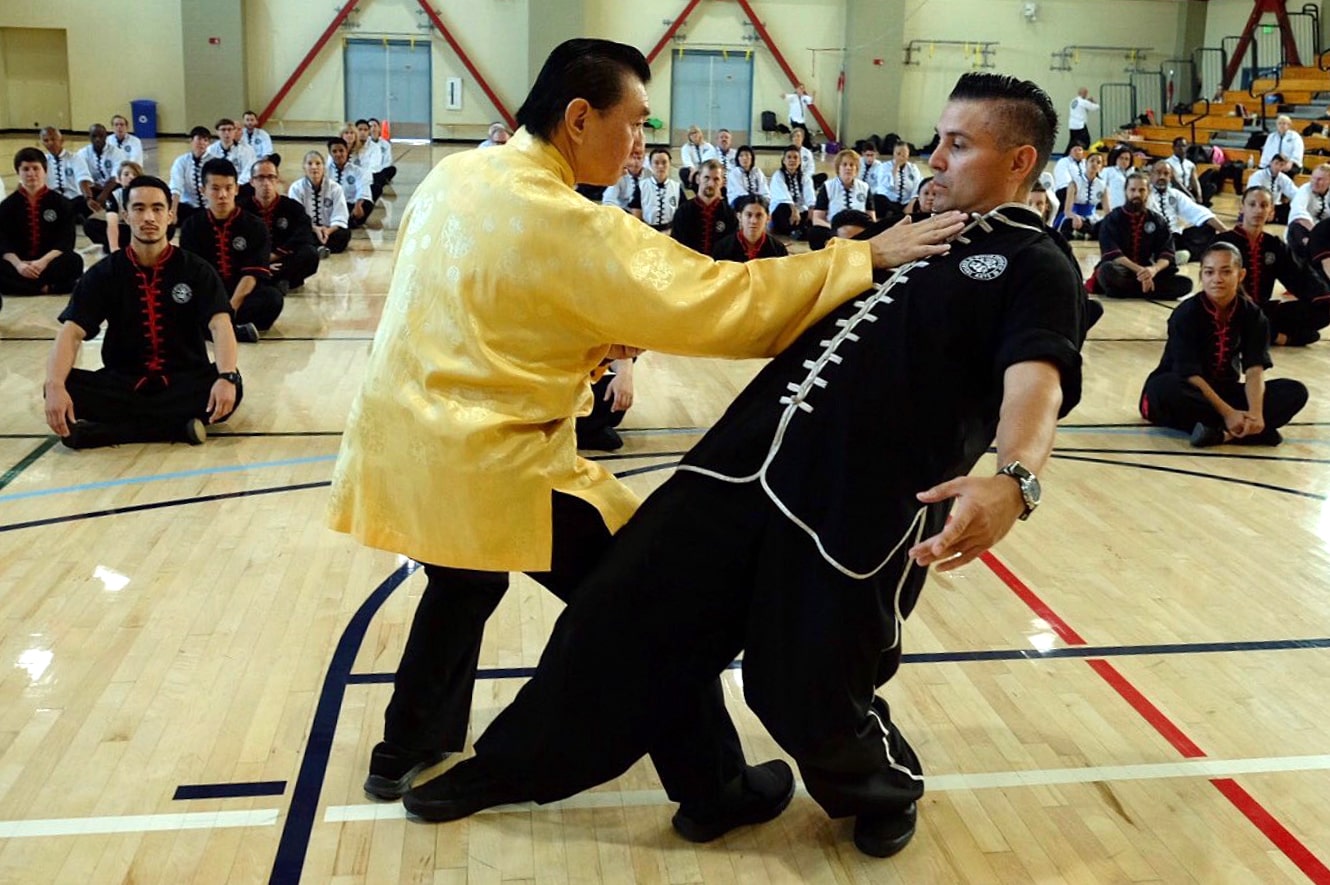The Origins of Combat Kung-Fu
Master Nathan Fisher, Founder of Combat Kung-Fu, has spent more than four decades teaching people how to protect themselves using Choy Li Fut Kung-Fu, one of the world's most versatile and effective systems of self-defense. Choy Li Fut Kung-Fu was founded in 1836 in Southern China by Grandmaster Chan Heung, one of China’s most famous kung-fu masters.
Master Fisher’s teacher, Doc-Fai Wong, was a high level student of the famous Grandmaster Hu Yuen Chou. Grandmaster Hu was a close disciple of the grandson of the system’s founder. Hu Yuen Chou taught the real essence of Choy Li Fut Kung-Fu by revealing the core fighting principles and techniques of the system’s founding family. This knowledge was passed down to Master Fisher through his teacher Doc-Fai Wong, a fifth generation Grandmaster in the Choy Li Fut system.
On occasion, Master Fisher had the privilege of working directly with Grandmaster Hu himself during his many visits to the U.S. The knowledge you’ll be gaining from this site represents more than four decades of self-defense innovation inspired by these great kung-fu masters.

4 Decades of Self-Defense Innovation
What makes Combat Kung-Fu different from learning in a traditional school is our singular focus on teaching only the most effective fighting techniques. These techniques are derived from traditional kung-fu workout routines called forms. Forms are essentially lengthy combinations of blocks, strikes, kicks, stances and other fighting movements connected together in one long continuous exercise. Since most forms contain hundreds of individual steps, they are great for developing endurance and strength once you’ve memorized them. However, without the guidance of an experienced teacher, it can be difficult to extract the powerful self-defense knowledge they contain.
That’s where Combat Kung-Fu comes in. Rather than teaching you traditional forms, which often contain hundreds of moves each, we get right down to the business of teaching you practical self-defense, one technique at a time. Our focus is on distilling the fighting essence of Choy Li Fut Kung-Fu, and presenting that knowledge to students that lack direct access to a traditional school. It is our hope that through consistent study, you’ll be able to gain the kind of self-defense skill that might take decades of training to learn elsewhere.
What is our secret to teaching self-defense? We teach you exactly how to respond to the kinds of attacks you could face out on the street. By practicing these responses diligently, over time you’ll notice that the techniques become second nature. And, that's the first step toward gaining the ability to react to an attack almost without thinking!

Develop Your Self-Defense Reflexes
Realize, however, that just memorizing a bunch of techniques will not guarantee you the ability to defend yourself. You also have to develop the reflexes to adapt to the changing circumstances of an attack. To achieve this kind of skill, you’ll need to engage in live training with a skilled partner. Additionally, you’ll need to strengthen all of your natural weapons: your kicks, your hand strikes and blocks, your grip strength, and your footwork, the foundation of all effective self-defense training. So, as you begin your study of the individual techniques, make sure to visit the Kung-Fu Basic Training section of our site. This section will guide you in developing all of your natural weapons and building the kind of strength, flexibility and endurance you’ll need for effective self-defense.
At Combat Kung-Fu it’s our hope that through the regular study of these powerful self-defense techniques you’ll become fluent in the vocabulary of self-defense. This way even if confronted with a situation you’ve never thought of, you’ll be able to adapt to your circumstances and react quickly and decisively enough to stop whatever attack you face! Be aware though that there are no shortcuts to mastery. This kind of skill requires training for 8-10 hours a week, over the span of 2-3 years to develop. And that’s a significant time commitment. But, once you get used to a weekly schedule of practice, you should begin to see that the knowledge, speed, strength, endurance, and reflexes that come from regular training will be well worth the effort. Not to mention the fact that you’ll be vastly improving your level of physical fitness as you train.
